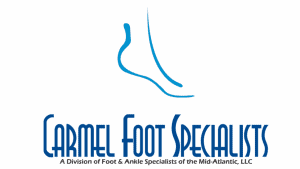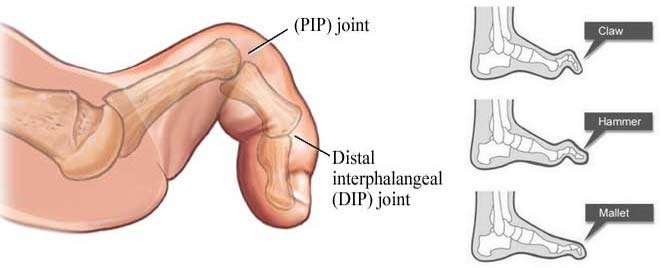

Podiatrists in
Charlotte, NC (Pineville)
Languages
- English
| Monday | 8:00 AM - 4:00 PM |
| Tuesday | 8:00 AM - 5:30 PM |
| Wednesday | 8:00 AM - 4:00 PM |
| Thursday | 8:00 AM - 4:00 PM |
| Friday | 8:00 AM - 12:00 PM |
- General Info
- Our Doctors
- Achilles Tendinitis
- Ankle Fractures
- Ankle Sprains
- Ankle Strain
- Arthritis
- Bunions
- Corns & Calluses
- Diabetic Foot Treatments
- Flat Feet
- Fungal Nails
- Ganglions
- Gout
- Hammertoes
- Heel Pain
- Ingrown Toenail Treatments
- Laser Nail Treatment
- MLS Laser Therapy
- Nail Problems
- Neuromas
- Orthotics
- Peripheral Neuropathy
- Plantar Fasciitis
- Plantar Warts
- Sports Injury
- Carmel Foot Specialists
-
Affiliated Locations
Hammertoes

Your little toes help to balance and propel your body as you move.
As your foot flattens, the little toes bed to grip the ground. Then they straighten, acting like levers to help push your foot so you can walk, run or dance. But if the front of your foot is wide, you may develop a problem known as a hammertoe.
Hammertoes are little toes that buckle or curl under. Over time these toes may hurt and make movement more difficult.
Causes:
The term “hammertoe” describes a buckling of any of the toe joints. Joints at the end or middle of the toe, as well as the joint near the ball of the foot, may be affected.
Toe joints usually curl because of a muscle imbalance or tight tendons. Hammertoes vary in severity and in the number of joints and toes involved.
Types of Hammertoes:
Depending on the joint’s ability to move, hammertoes can fall under two types—flexible and rigid.
A flexible joint can be straightened with your fingers. Although they look painful, flexible hammer toes may not hurt.
Rigid hammer toes cannot be moved, even with the fingers. Rigid joints may cause pain and distort foot movement. This may put extra stress on the ball of the foot, causing a callus.
Physical Exam:
Your doctor will examine all your toes, testing whether or not buckled joints can be moved. Your feet will also be checked for any skin changes.
Corns (a buildup of dead skin cells) often form between curled toes or on top of buckled joints where shoes rub. If irritated, corns may turn into open wounds and become infected.
Treatment:
If your symptoms are mild, changing shoes may be all the treatment you need. Using a splint or pad to hold your toes straight may also help or cushioning corns and calluses with felt padding.
If your symptoms are severe, surgery may be needed. The type of procedure often depends on whether your toe joints are flexible or rigid.
Flexible Joints:
To release a buckled joint, the tight tendon (often the bottom one) is cut and repositioned.
Rigid Joints:
A piece of bone may be removed to help straighten a rigid toe. Two surgical procedures involve arthroplasty and fusion.
With arthroplasty, part of the curled joint is cut away. The “gap” fills in with fibrous tissue. With fusion, the joint cartilage is removed. The toe bones heal as one longer bone.
With either surgery, a pin may be used to hold the remaining bone in position during healing.
After Surgery:
Almost all surgeries on hammer toes are out-patient procedures. In fact, you may even be able to bear weight on your foot by the time you go home. For best results, however, you may need to wear a surgical shoe for several weeks.
Your foot will be bandaged after surgery, and you may need to wear a surgical shoe to support the foot during healing. Your doctor may recommend a special dressing to limit swelling. Elevation and ice can also help.
For best results, raise your foot about heart level and apply ice for 15 to 20 minutes. Protect your skin by placing a towel between the ice pack and your skin. Help make surgery a success by wearing shoes that fit your feet. Shoes should be long enough and wide enough to keep all your toes comfortable.


